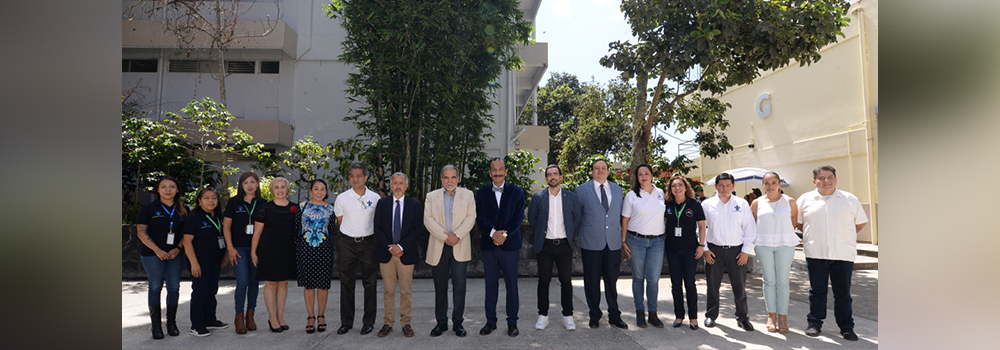- University President Martín Aguilar Sanchez led the act, along with the Social Safety Net authorities and the Labor Party com. dinnerpred
- He highlighted his contributions in the field of basic and applied research in various fields of earth sciences
- Carlos Welch Rodriguez, CCT Coordinator, said the entity is an example of science that is useful to society
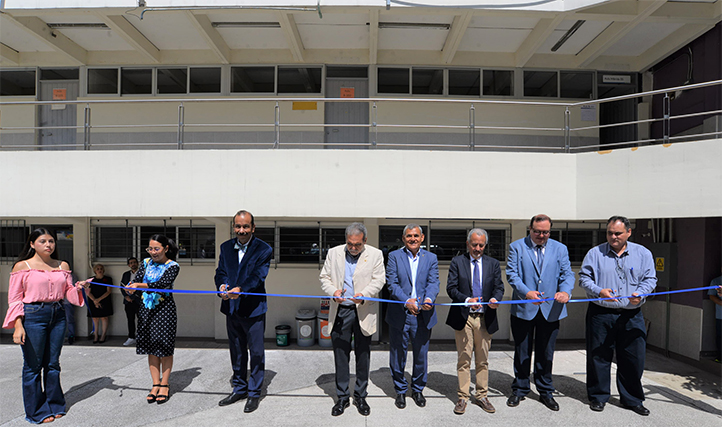
The university and federal authorities opened the new CCT facilities
Claudia Peralta Vasquez
Photos: Cesar Bicil Ramos
09/05/2023, Xalapa, version- The Center for Geosciences (CCT) of the University of Veracruzana (UV) has new facilities in the heart of the university district, which were inaugurated by University President Martin Aguilar Sanchez and the heads of the National Seismological Service (SSN) and the National Seismological Agency. Disaster Prevention Center (com. dinnerpred), Arturo Iglesias Mendoza and Enrique Guevara Ortiz respectively.
For 19 years, the CCT has been located in a building on Francisco J. Moreno Street, in the Emiliano Zapata neighborhood, but thanks to the 2021-2025 Action Program “For an Integrated Transformation”, with clear goals such as reducing expenses in non-essential leases, it is currently carrying out its tasks in Arena Gonzalo Aguirre Beltrán, in the university district.
The space is adjacent to the faculties of Biology, Electronic Devices and Agricultural Sciences.
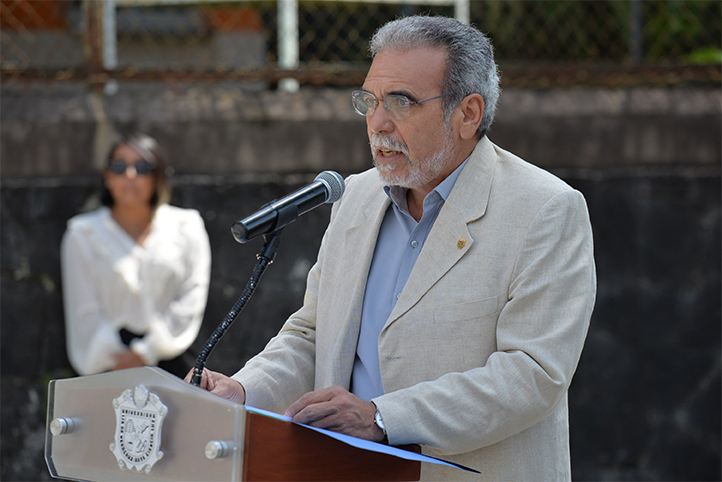
University President Martin Aguilar Sanchez highlighted CCT’s contributions over the past 24 years
“The CCT, in response to its increasingly broad institutional needs, has a new campus that will house 10 academics, 13 graduate students, four administrative staff, and 20 students from undergraduate, masters, and doctoral programs,” said the university president in his address. .
Having commended the efforts of the CCT team in managing and making these changes possible, he highlighted the long-term contributions in terms of basic and applied research in different fields of Earth sciences; Creation of a pioneering graduate program in the southeast of the country and strengthening of the network of university observatories, with the commissioning of the Seismological and Volcano Observatory (OSV) and the Water Observatory of the State of Veracruz, national and international standards. international.
“After 24 years of existence, CCT emerged as an academic proposition that wanted to make knowledge from geology, climatology, seismology, meteorology, hydrology, and other natural disciplines a major driver of the research conducted in the UV field. And broaden the impact. Knowledge generation in society.”
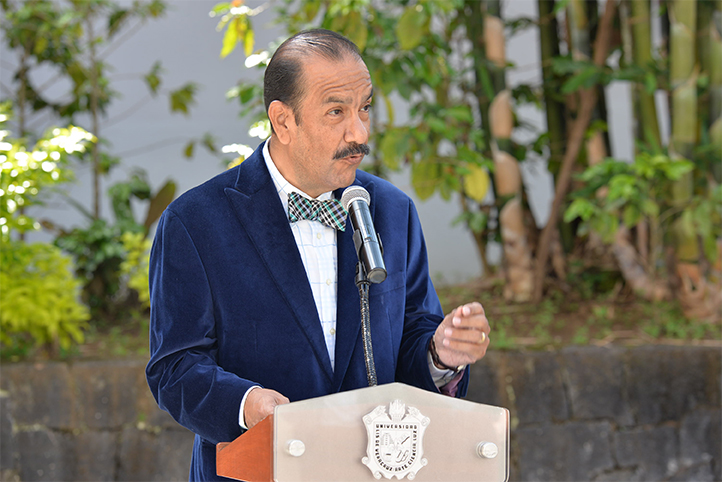
Carlos Welch Rodriguez, CCT Coordinator, said the entity is an example of science that is useful to society
He stressed to university officials, researchers, researchers, academics, undergraduate and postgraduate students, administrative and manual staff, the importance of the center in generating knowledge related to disaster prevention.
He announced that the investment is 1,856,000 pesos, and includes administration spaces, observatories, a geophysical instrument laboratory, 10 researchers’ cabins, an administrative area, and a co-ed classroom.
“It will be provided with all essential equipment and materials, not only to carry out projects and research lines, but also to contribute to higher productivity and further growth.”
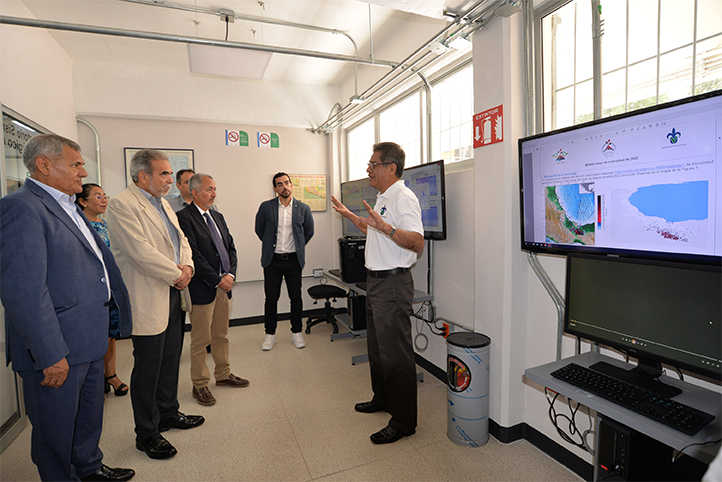
Francisco Cordoba Montiel, in charge of the OSV, explained to the authorities the operation of this area
Carlos Welch Rodriguez, coordinator of the CCT, focused his thesis on its creation in 1999, which was endorsed by the University General Council (CUG). During this time he had two curators who preceded him: Ignacio Mora González and Juan Cervantes Pérez, whom he knew for their perseverance and dedication.
“Today we return to the place where the center was born, thanks to a group of researchers who initiated its creation: Adalberto Tejeda Martínez, Ignacio Mora González and José Luis Murrieta, who had the vision of creating a center for outreach and education.”
The researcher highlighted four elements that make CCT a director of science useful to society. One of them is the continuous cooperation of 25 years with com. dinnerpredwith Halcón Station 1, the first of its kind nationwide.
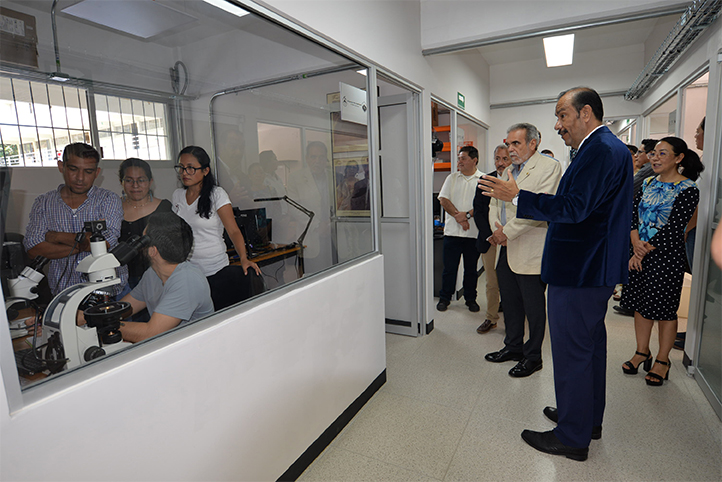
After the opening, there was a tour of the new CCT facilities
Likewise, he underlined the relationship and confidence that the SSN has established in CCT to acquire the OSV, the six monitoring stations, as well as a new station, as a result of an agreement that is expected to be reached soon.
Thanks to this, he said, “we are an example in service and communication with the Civil Protection Secretariat.”
Welshman Rodriguez also commented on the various financings from National Science Foundation; Geophysicists Without Borders, Massachusetts Institute of Technology (MIT); the Swiss Agency for Development and Cooperation; National Council for the Humanities, Science, and Technology (Konahset); British government, among others.
He also stated that they will soon have a complete geophysical monitoring station in the Pico de Orizaba Protected Natural Area (ANP), funded by Villas Pico.
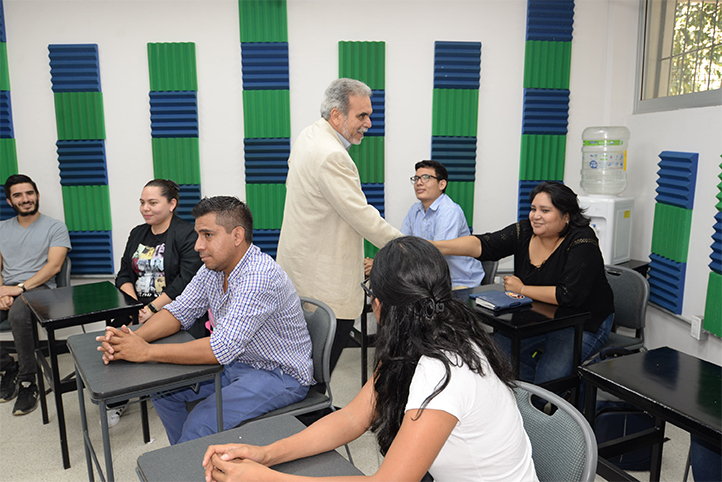
In the co-ed classroom, Martin Aguilar Sanchez received master’s degree students in Earth Sciences
At the end of his letter, he singled out the team of researchers for making earth science grow and become a reality not only for university students but for the community in Veracruz and in the country.
He was confident that the interaction with biologists and agronomists in the field of atmospheric sciences and electronic devices, would allow a new generation of interdisciplinary training and science useful to Mexico.
After the opening, the authorities toured the CCT facilities and co-educational classrooms. In the OSV they learned in detail the procedures for observing the Pico de Orizaba volcano and the seismic activity that was carried out in conjunction with com. dinnerpred and the social safety net, as well as climate change.
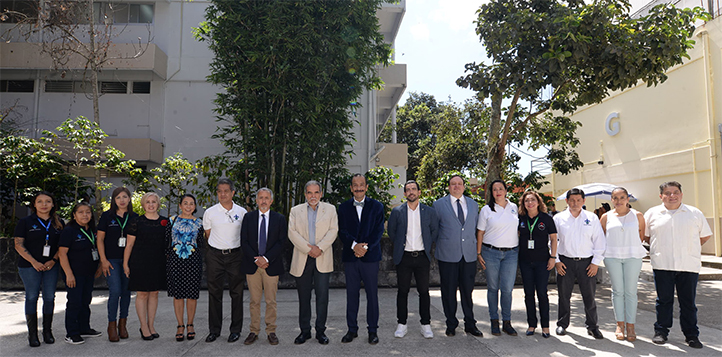
UV authorities, SSN and com. dinnerpredwith CCT staff
Explained by Francisco Córdoba Montiel, OSV Responsible; Rafael Torres Orozco, researcher at CCT, and Agustín Fernández-Eguiarte, attached to the Institute of Atmospheric Sciences and Climate Change of the National Autonomous University of Mexico (UNAM), who are conducting a research residency at the center.
The inauguration was attended by: Juan Ortiz Escamilla and Jacqueline Junguetaud Zamora, Heads of the Academic and Institutional Development Secretariats, respectively; Roberto Zentino Cuevas, Director General of Investigations.
In addition, Pablo Samuel Luna Lozano, Ibiza Martínez Serrano, and Carlos Roberto Serdán Cabrera, Directors of the Faculties of Electronic Devices, Biology and Agricultural Sciences, respectively; José Otón Flores Consejo, Head of Coordination of University Observatories (CUO), and Miguel Ángel Cano Acele, Director of Projects, Construction and Maintenance.
Categories: Sciences, Major, Work Program 2021-2025, Technology

